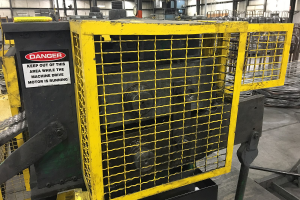Good News, Bad News: OSHA and the Global Harmonization System
Our guest blogger is Joe Wolfsberger, a senior advisor at FDRsafety and an expert in occupational health/industrial hygiene.
OSHA has published the final rule on the Global Harmonization System that applies to producers, distributors and users of chemicals. This revision to the existing Hazard Communication Standard has implications that are both positive and negative. Let’s take a look at the good news / bad news and how it will affect you and your operations.
The good news
For companies with a global presence, the promise of universal regulations is seen as welcome relief from the multitude of regulations that they must deal with around the world. While a single set of EHS regulations that apply for all countries is still only a distant future hope, steps are being taken to harmonize the chemical hazard information requirements across much of the globe.
In an effort to support this, OSHA on March 26, 2012, published the final rule for its Global Harmonization System regulations. A summary of the regulation can be found here. As with any new regulation there will required changes to the way companies comply. Material Safety Data Sheets (MSDS) will become Safety Data Sheets (SDS) requiring 16 specific sections ensuring consistency with other countries’ regulations, and labels must include a signal word, pictogram, hazard statement and precautionary statements for each hazard class and category. All of this is designed to enhance worker comprehension of hazards and eliminate confusion.
Now, the bad news
The changes being made to integrate GHS into the HazCom Standard will alter the way flammables are classified, making them no longer consistent with NFPA’s categories for flammables.
OSHA will no longer have a classification of combustible; all liquids with a flashpoint below 199.4oF (93oC) will be referred to as flammable. (Note: the Mine Safety and Health Administration has not changed their definitions) OSHA will be changing from three classes with sub classes (Class I A, I B, I C, II, III A, & IIIB) to four categories (Category 1, 2, 3 & 4). Classification will still be based on the flashpoint of the liquid but the ranges will be different. There is not a one-to-one relationship between classes to categories as can be seen in the following chart.
Although OSHA has changed its classifications, many states and municipalities have adopted NFPA and International Fire Codes (IFC) as the basis for their local ordinances on flammable liquids. Care must be taken to ensure that complying with the new OSHA regulation does not create a non-compliance situation with local ordinances.
As an additional note, although the implementation date for product manufacturers is June 1, 2015, and for distributors December 1, 2015, workers must receive training by December 1 of this year. Training must include the new label elements and safety data sheet format in addition to the current training requirements.
For information on training requirements for GHS, see our earlier post. If you have any questions about the OSHA Final Rule on Hazard Communication, classification of flammable liquids, hazard assessments, OSHA Compliance Inspections or health and safety training, contact us at info@fdrsafety.com



1 Comment
Well, you pretty much hit the nail on the head: good and bad news. It’ll be a welcome day when the combuistible classifications can all line up into one system too, but, I won’t be holding my breath for that. Still, it’s nice to make the regulations a little easier to understand. Between storage, MSDSs, fire doors, and emergency planning, there is a lot to think about, but, it is critical to making sure employees are safe in their work environments. Thanks for the update!